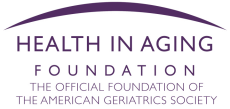Alice Pomidor, MD, MPH, AGSF
Professor
Florida State University School of Medicine
Mary Palmer, PhD, RN, FAAN, AGSF
Helen W. and Thomas L. Umphlet Distinguished Professor in Aging
UNC School of Nursing
Your eyes are your windows on the world, so it’s wise to protect your vision, especially as you age. Although not all older adults will experience vision problems, many people will experience age-related changes. While many vision problems are easy to correct with prescription lenses or brighter lighting, other problems require medical treatment. These include:
Cataracts. This age-related vision problem occurs when the lens in one or both of your eyes becomes cloudy. By age 80, more than half of all Americans will either have a cataract or will have had surgery to correct a cataract. Symptoms include dullness, blurriness, or a brownish tint to your vision. As cataracts gradually get worse, vision problems become more noticeable. Although complete healing takes about a month, cataract surgery can immediately and dramatically improve your vision. During the procedure, the surgeon will implant a clear, plastic lens—like a permanent contact lens. Cataract surgery is safe and effective for most people, no matter what their age, health, or mental status. Medicare and most insurance plans cover the costs of the procedure.
Age-related macular degeneration (ARMD). The macula is a very small structure within the eye that helps you see fine details. When it begins to degenerate (fail), your central (straight ahead) vision can become distorted. People with ARMD will keep their peripheral (side) vision, and training can help them make the most of their lowered ability to see. There are a number of aids that can help people with ARMD, including magnifying lenses, large print items, speech software for computers, and computer and video enlargement systems. Continue reading





